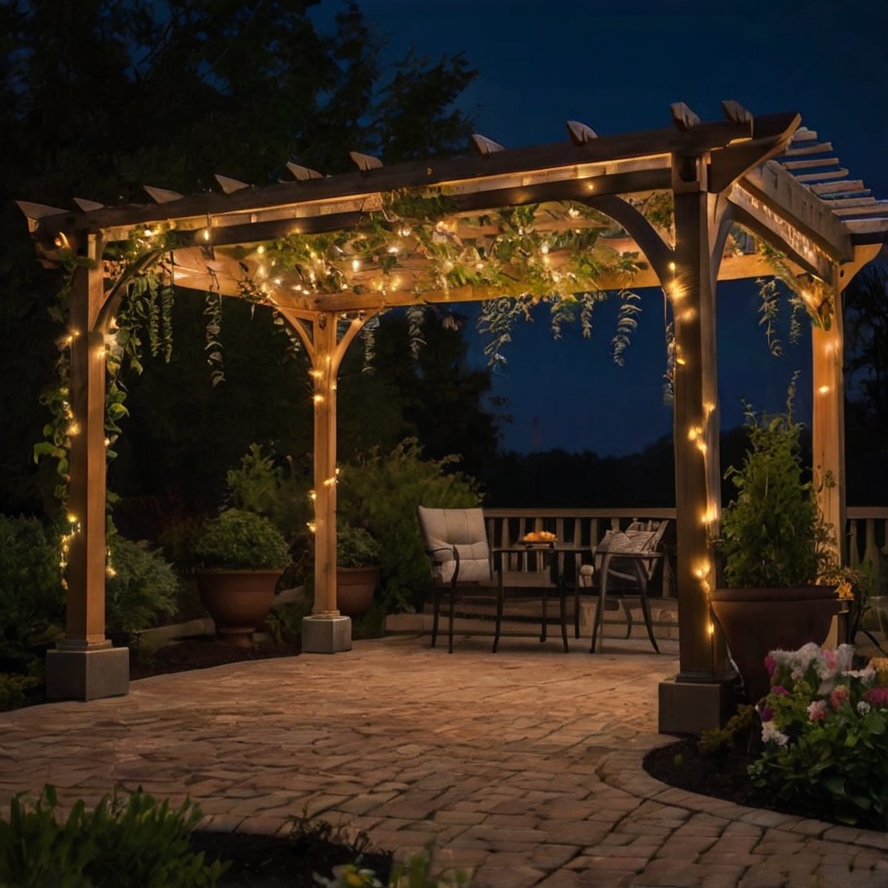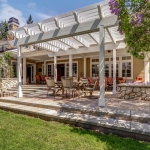For many Australian homeowners, the traditional garage has long been the default for protecting their car. But as lifestyles evolve and architectural trends shift, a more open, airy, and often more affordable solution is gaining serious traction: the pergola.
Yes, you read that right! When thoughtfully designed and constructed, pergolas can offer a surprisingly effective and stylish alternative to a full garage, particularly for certain homes and in specific Australian climates.
So, why are pergolas becoming the unexpected hero of car protection down under? Let’s dive in!
The Appeal of the Pergola Carport
The beauty of a pergola as a car shelter lies in its versatility and aesthetic appeal. Unlike a solid, imposing garage, a pergola offers a lighter, more integrated feel with your existing home and garden. Here’s why it’s a compelling option:
- Cost-Effectiveness: Generally, building a pergola is significantly less expensive than constructing a traditional brick or metal garage. This makes it an attractive option for those on a tighter budget or looking for a more accessible way to protect their vehicle.
- Aesthetic Integration: Pergolas can be designed to seamlessly blend with your home’s existing architecture and landscaping. They can add a touch of elegance and create a beautiful outdoor living space that doubles as a car shelter. Think of it as an extension of your outdoor entertaining area.
- Open-Air Protection: While not offering the same level of security as a locked garage, pergolas provide excellent protection from Australia’s harsh elements. They shield your car from intense sun, reducing interior heat and protecting paintwork from UV damage. They also offer a good defence against rain and hail.
- Flexibility and Customization: Pergolas can be tailored to your specific needs and the size of your vehicles. You can opt for a simple, freestanding structure or one attached to your home, with various roofing materials and designs to choose from.
- Improved Airflow: Unlike a closed garage, a pergola allows for excellent airflow, which can be beneficial for your car, preventing moisture build-up and potential rust issues.
- Enhanced Property Value: A well-designed and professionally built pergola can actually enhance your property’s appeal and value, offering a functional and attractive addition.
Expert Recommendations for Building a Pergola Carport
While the idea is appealing, simply slapping some beams together won’t suffice for effective car protection. To ensure your pergola functions optimally as a carport, consider these expert recommendations:
1. Roofing is Key: Choose Wisely for Australian Conditions
“The most critical element for a pergola car shelter is the roofing material,” advises Liam O’Connell, a seasoned landscape designer with over 15 years of experience in the Australian market. “You need something that can handle intense UV, heat, and potentially heavy rainfall or hail.”
Solid Roofing Options: For maximum protection, consider solid roofing materials like:
- Corrugated Metal (Colorbond or Zincalume): Durable, low-maintenance, and available in a wide range of colours to match your home. Ensure it’s installed with adequate pitch for water runoff.
- Polycarbonate Sheeting: Offers excellent light transmission while blocking harmful UV rays. It’s lightweight and impact-resistant, making it a good choice for hail-prone areas. Opt for UV-coated varieties.
- Insulated Panel Roofing: These offer superior insulation, keeping your car cooler in summer and warmer in winter. They are a more premium option but provide excellent performance.
Louvered or Retractable Roofs: For ultimate flexibility, consider systems with adjustable louvers or retractable fabric covers. These allow you to control sun exposure and ventilation, offering a sophisticated solution.
2. Structural Integrity is Non-Negotiable
“Don’t skimp on the structural components,” stresses Sarah Jenkins, a structural engineer specialising in outdoor structures. “Your pergola needs to be robust enough to withstand wind loads, especially in coastal or exposed areas, and support the weight of your chosen roofing material.”
- Foundation and Footings: Ensure the posts are set in deep, concrete footings. The depth and size will depend on your local council regulations and soil type.
- Post Size and Spacing: Use appropriately sized timber or steel posts that are rated for outdoor use and the expected loads. Spacing should be determined by engineering calculations to prevent sagging.
- Beam and Rafter Strength: The beams and rafters supporting the roof must be adequately sized and spaced to prevent deflection and ensure long-term stability.
- Attachment to the House: If attaching to your home, ensure it’s done correctly by a qualified builder to avoid structural damage to your existing dwelling.
3. Consider the Australian Climate and Your Specific Location
“Every region in Australia has unique weather patterns,” remarks David Lee, a building consultant with expertise in regional construction. “What works in a mild temperate climate might not be suitable for a tropical or arid zone.”
- Sun Orientation: Position the pergola to maximise shade during the hottest parts of the day, especially during summer months.
- Wind Loads: Factor in prevailing wind directions and speeds when designing the structure and selecting materials.
- Rainfall and Drainage: Ensure adequate pitch for water runoff and consider the placement of downpipes if the roof is connected to your home’s guttering system.
- Hail Resistance: If you live in an area prone to hailstorms, opt for impact-resistant roofing materials.
4. Height and Clearance Matter
“You need to ensure sufficient clearance for your vehicle, including any roof racks or aerials,” advises Mark Thompson, a custom builder who frequently works on outdoor projects. “Also, consider the height for ease of access and to prevent hitting the structure when opening car doors.”
- Vehicle Dimensions: Measure your vehicle’s height and width, and add a generous buffer for comfortable entry and exit.
- Headroom: Aim for at least 2.5 to 3 meters of clearance for most vehicles.
5. Permitting and Regulations
“Always check with your local council regarding building permits and regulations for structures like pergolas, especially when used as a carport,” reminds Emily Carter, a local council planning officer. “There may be specific requirements for setbacks, height limits, and structural certifications.”
Is a Pergola Carport Right for You?
A pergola can be a fantastic, stylish, and cost-effective alternative to a traditional garage for many Australian homes. However, it’s crucial to approach the design and construction with careful consideration for your specific needs, climate, and local regulations. By following expert advice and investing in quality materials and workmanship, you can create a beautiful and functional outdoor space that not only protects your car but also enhances your home’s overall appeal.
So, next time you’re thinking about car accommodation, look up the humble pergola might just be the perfect solution!




